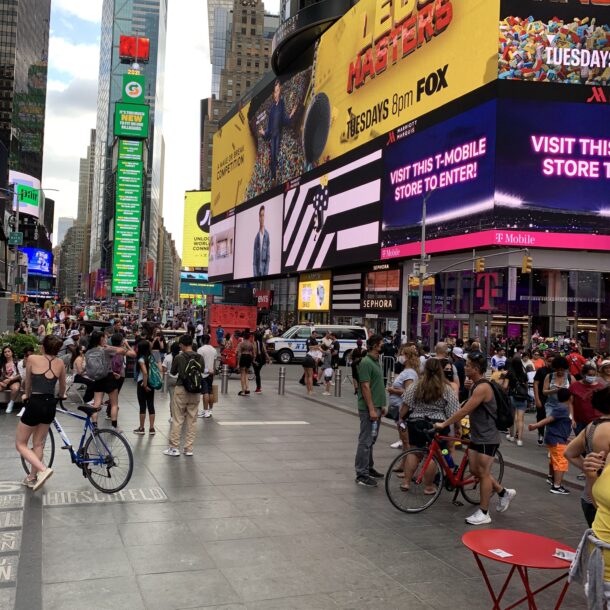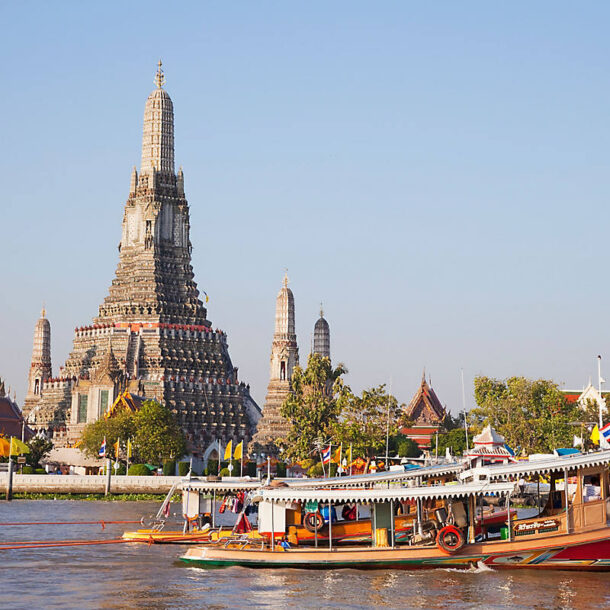
It’s the crack of dawn, and as the sun’s rays slowly gleam, I stand in awe and admire the bustling city scene in the midst of Milan’s Piazza del Duomo. There is a particular energy reverberating in Milan’s streets; people from all walks of life are busy getting through the start of the day. Although it’s early, everyone seems to be dressed to the gills; after all, this is one of Italy’s, if not the world’s, most iconic fashion hubs.
The Duomo is situated in Milan’s downtown; tourists and locals come here to explore the shopping venues and discover its majestic surroundings. The cathedral is a marvel of design; several architects worked on its construction, including Italian, German, and French. The roof is admirable; its spires and bristles are the oldest in the world, adorned by unique marble sculptures. It provides a compelling view of Milan from its rooftop terraces.
The Navigli Waterways
Milan never ceases to fascinate; even though it’s my first day in town, I am already falling in love with this Italian city. Situated in the Lombardy region, Milan has several hotspots that are off the beaten path. As a newcomer, you will discover that Milan offers much more than upscale shopping.
A first stop in this much-anticipated tour is visiting the Navigli waterways. The area surrounding the canals is frequented on the last Sunday of the month by antique bargain hunters and on weekdays by tourists and locals alike. The network of canals offers visitors a chance to see the city from a different angle, a welcome alternative to the traditional fashion-obsessed city center. Partly designed by Leonardo da Vinci, the Navigli Grande canals are lined by restaurants, pubs, cafes, and vintage shops.
History has it that the canals were a part of the city’s port district until the 19 century. In the past, they served an important role in allowing trade and commerce to prosper in Milan; barges arrived with imported goods and left with Italian handmade merchandise and textiles. Now one of Milan’s trendiest and liveliest quarters, they are worth a visit.
At night and during the festive season, lights adorn the Navigli canals. For 10-12 Euros, you can hop on a tour boat and explore Milan’s waterways. A typical tour lasts 50 minutes allowing you to see ancient castles, mills, and abbeys while exploring Milan’s rich heritage. There are several restaurants surrounding the canals where you can enjoy a typical Italian aperitivo, an old tradition where locals gather in the side bars and restaurants to chat and savor a few nibbles and cocktails after the day’s work.
Milan’s Trams
With so much to see in this bustling metropolis, trams are an essential means of transport, ferrying people around the city. Milan’s trams are among the oldest in the world; the original yellow and orange trams date to the 1920s and 1950s. As I strolled through the streets of Milan, I noticed several people dining inside the trams, an age-old tradition synonymous with the city’s heritage. You can hop on the ATMosfera, a vintage tram serving dinner and wine, dine on fine Italian cuisine as you pass the city’s most popular scenic routes. Milan’s transport authority operates all tours.
Sforza Castle
Another day beckons me in Milan; next on my schedule is a much-anticipated visit to Sforza Castle. Built by the Duke of Milan, Sforza Castle encompasses a large part of Milan’s northern city center. The castle’s main entrance is distinguished by the significant filarete tower, which collapsed in 1521; it has since undergone several renovations. The latest in the series of renovations occurred from 1893 to 1904. Sforza Castle is also home to several museums and art collections. The castle serves as the headquarters of Milan’s civic museums. Inside the castle, you can explore several civic museums, including a collection of art displays and paintings showcased chronologically.
After touring Sforza, I take in my surroundings at nearby open parks. Many historic buildings and monuments surround them, the most important being the Arch of Peace or Arco della pace, specifically built to celebrate Napoleon’s victories. Covered in an array of marble and decorated with Corinthian columns and sculptures, the arch is noticeably seen from a distance when you enter the gardens around the castle.
World Class Shopping
I’ve heard a lot about Milan’s prestigious shopping; a trip wouldn’t be complete without a shopping expedition. Renowned as the most elegant and spectacular part of the city Via Montenapoleone is home to some of the world’s top fashion designers. I stumbled across some of Italy’s best known brands, including Armani, Valentino, Versace, and others.
I also came across Palazzo Melzi di Cusano, owned by one of Milan’s wealthiest families, built in 1830; this iconic building accurately represents neoclassical architecture. Palazza Melzi di Cusano has kept its original design, having sustained severe damage after the second world war.
Milan’s Artistic Heritage
What’s a trip to Milan without admiring one of the world’s most iconic works of art? The Last Supper by Leonardo Da Vinci is a renowned painting in one of Milan’s oldest convents. It depicts Christ with the apostles the night before his death, dating back to 1495. The painting attracts hundreds of visitors each month to Santa Maria delle Grazie.
Since its inception, the painting hasn’t moved from the convent and remains an integral part. Da Vinci painted it directly on the dining hall walls of the convent. Although several art pieces mimic the painting on a small scale, the original masterpiece is 460 cm x 880 cm and is larger than other Da Vinci paintings like the Mona Lisa.
With all it has to offer, Milan is among the most charming and vibrant Italian cities. Whether you are there to explore its rich historical legacy, upscale dining, or its cosmopolitan and diverse high-end local shopping, it never ceases to fascinate!


